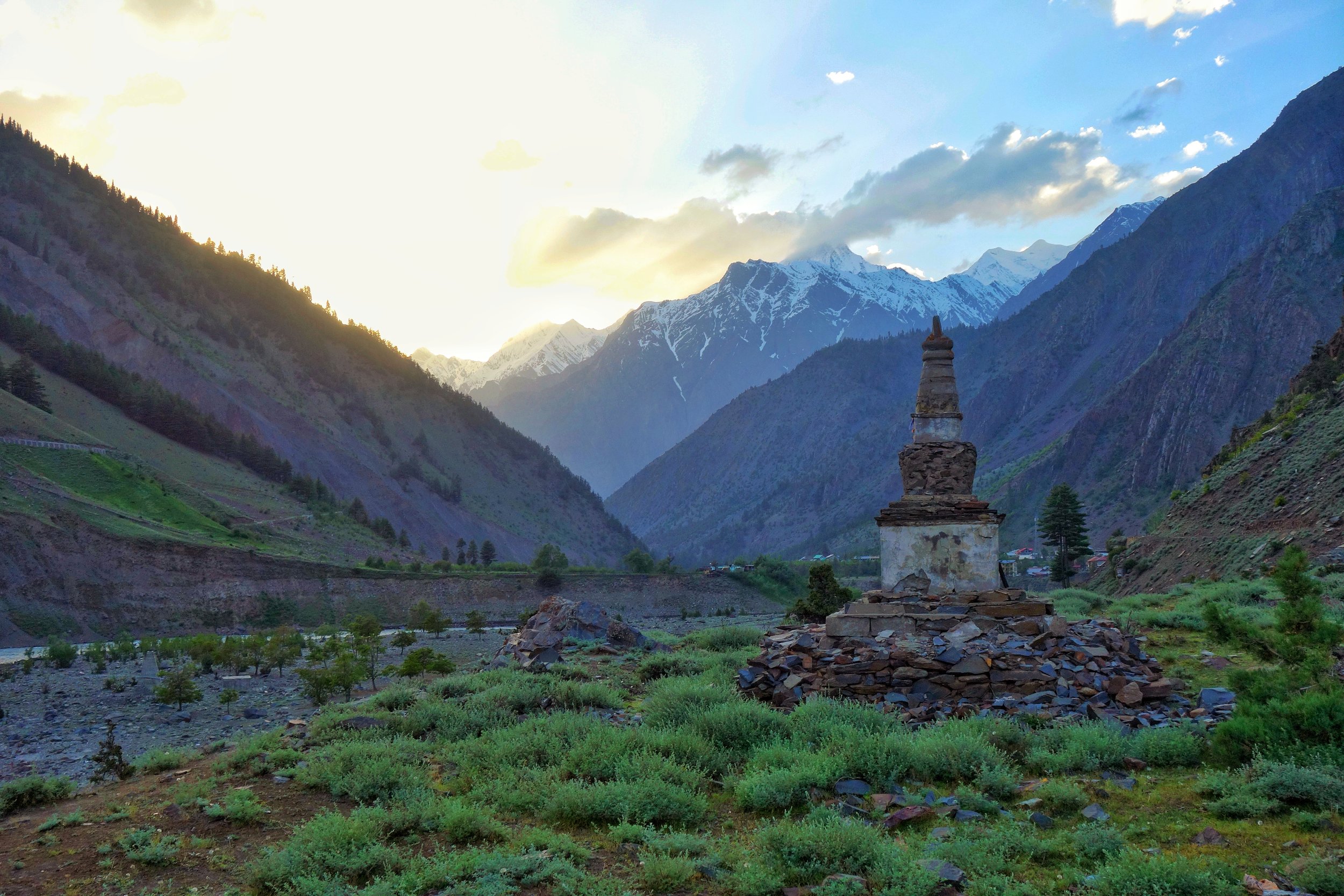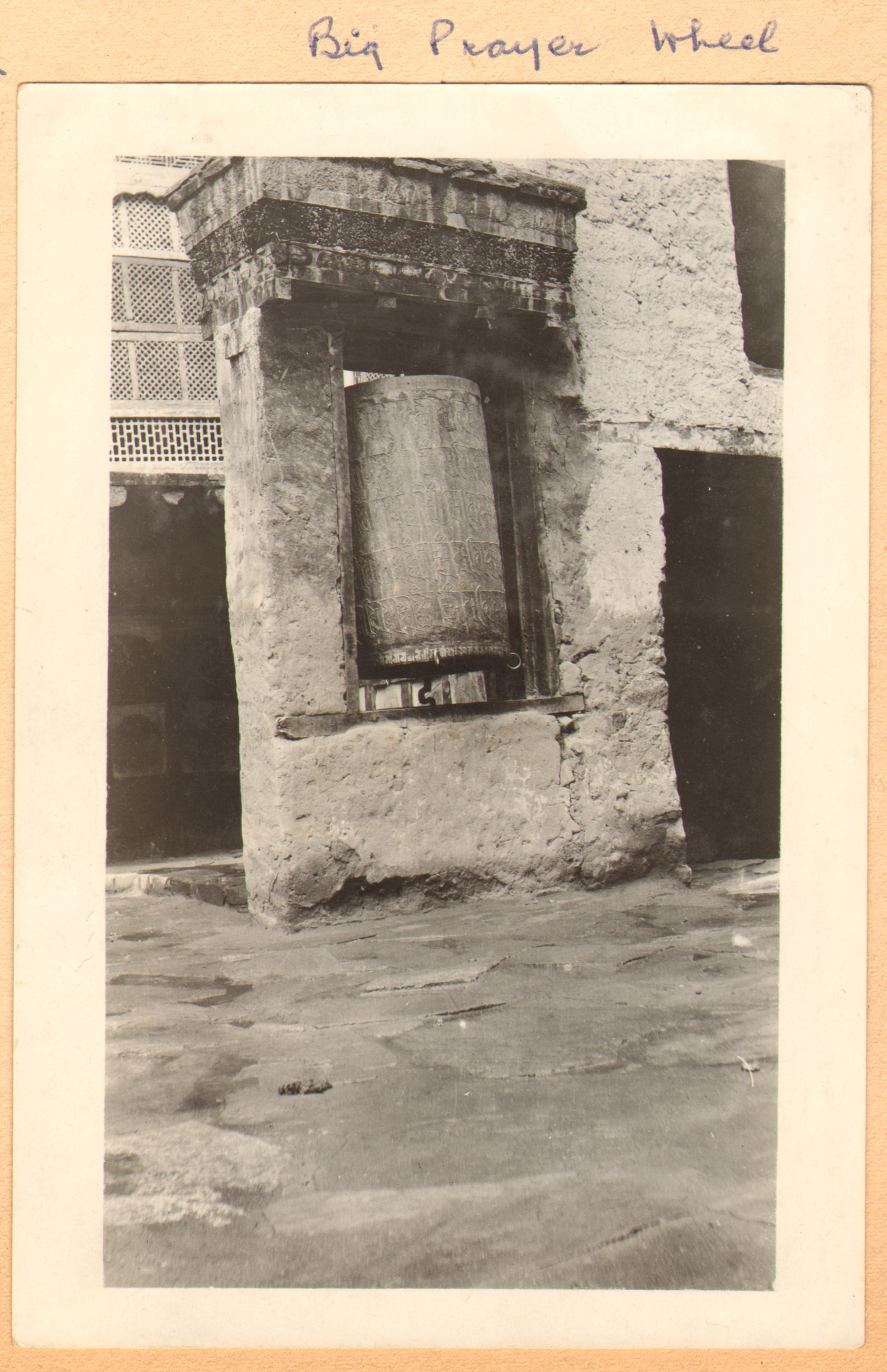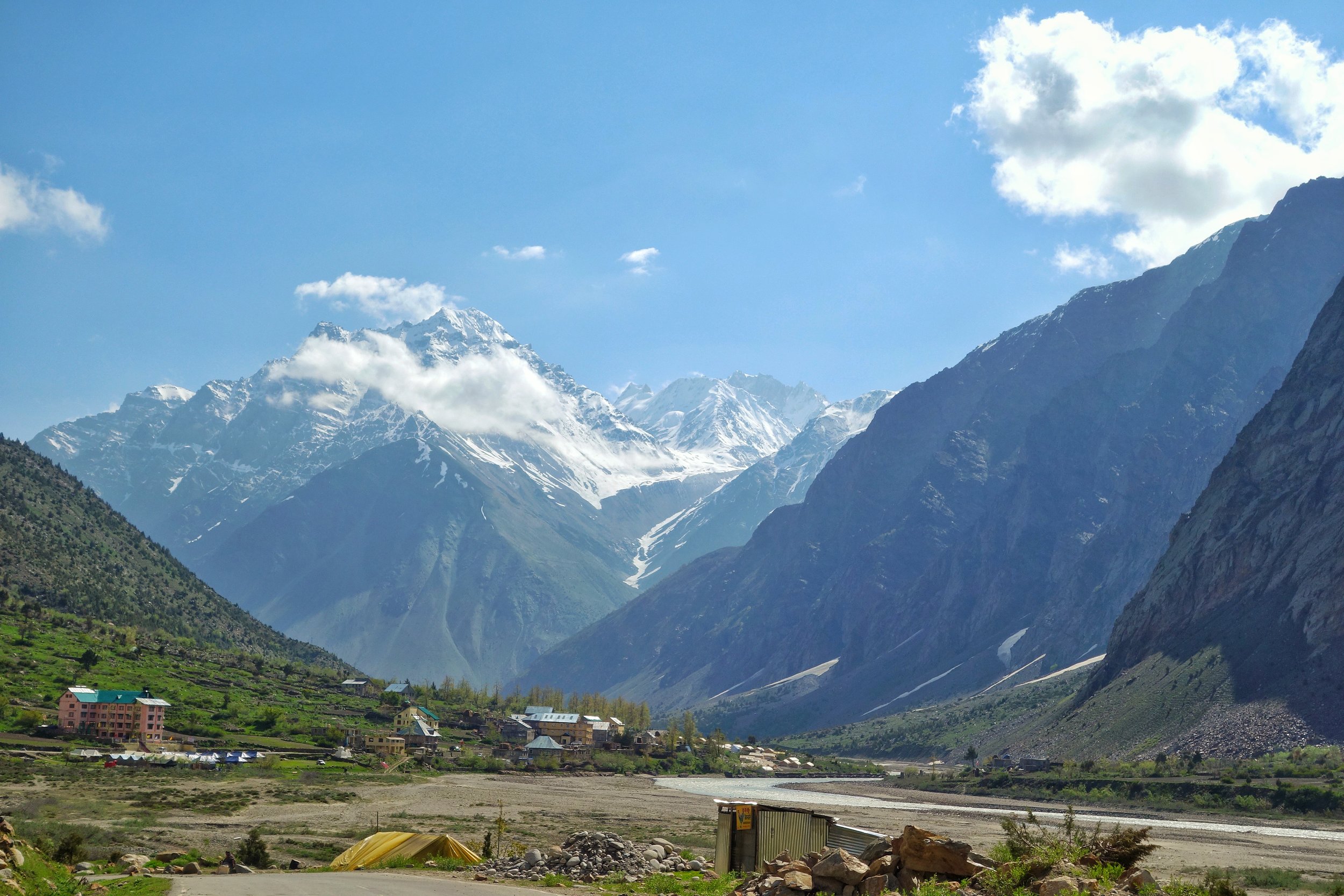The Chamba Lahaul and the British Lahaul Story
The Himalayan / Trans Himalayan Region of Lahaul Spiti today stands as a district in the state of Himachal Pradesh. Both these Regions which were once and still are mostly Himalayan backwaters are now seeing rapid changes coming. The opening of the Rohtang Tunnel for public will open Lahaul at least to outside world like never before. And from a Tourist point of view it will grow more than a one night stop over on the way to Ladakh. Spiti will also be affected though it manages all year round connectivity from the other side. And Spiti has recently seen the influx of Tourists especially the younger generation like never before. Its like Spiti is like the new Ladakh and we see stuff on Spiti all the time.
Wife of Thakur Amar Chand of Lahaul as taken by Ralph Stewart 1913
Lahaul and Spiti have had a checkered fascinating history and lying on the Himalayan borderlines they have always been the bone of contention for various powers in the Region from the states of Kashmir, Chamba, Kullu, Bushahr, Ladakh, Guge, Tibet, the Chinese and even the Mongols, Baltis and Yarkandis. However little is known of the exact circumstances and the chain of events of History that followed as there are no written records. All the above powerful states / people left some mark or influence on these two adjoining Regions. This is an attempt to piece together their History though for most of the time the History followed its separate course in Lahaul and its own course in Spiti. Thats only fair as physically there is a contrast between the verticality of the Cis-Himalayan Lahaul Valley and the seeming Horizontality of the Trans-Himalayan Spiti Valley.
Lahual from somewhere near Keylong
The culture of Lahaul is also a curious mix of many influences mostly Hindu and Buddhist but also of the aboriginal Religion which was referred to as Loong Pai Chos which shared some similarity with the old Tibetan Bon traditions. This has resulted in a syncretic Religion in most of Lahaul and the Lahaulis like to mostly refer to themselves as Hindu-Bodh, which to me is a perfect example of peaceful co-existence of two major Religions. Spiti on the other hand has always been under great influence of Tibet and Ladakh and hence it has developed a strong tradition of Tibetan Buddhism as practiced in Tibet and Ladakh. And of course there are many Cultural similarities with the same Regions as well.
Somewhere in Lahaul by Ralph Stewart 1913
The origin of the name “Lahaul” is kinda not clear. The Ladakhis / Tibetans referred to Lahaul as Garzha or Garsa or vDvarska though some say the present name is derived from the Tibetan word Loh-Yul or the Land of the South. From the earliest records it is said that Lahaul was a part of the Kingdom of Chamba under Ajy Verman who became a Vassal of Kashmir sometime around the 8th Century. Thus Lahaul became a part of the Kashmir Kingdom and the influence of the most powerful King of Kashmir, Lalitaditya can be seen in Maylang and even in some early Temples in Kullu. But with time Kashmir lost its influence and it was Chamba Kingdom which prevailed over Lahaul it seems.
A Village near Darcha towards Zanskar.
Later it seems Lahaul became a part of the vast Kingdom of Guge in Western Tibet which included besides Lahaul, Spiti, Zanskar, Ladakh and even parts of Kashtwar and Paldar (as Kishtwar and Paddar were referred to by the Tibetans). At that time it is said that Lahaul was much bigger and included parts of Pangi and Paddar as they exist today. Since these Valleys are contiguous along the Chandrabhaga/ Chenab it is quite possible that the Guge influence was there as well. But after the fall of the Guge Kingdom, Lahaul was eyed upon by the neighbouring Kingdoms and it became somewhat of a bone of contention between the Chamba, the Kullu and the Bushahr Kingdoms. And it was during the Guge rule that Buddhism spread rapidly all over Lahaul and became the dominant Religious order. It was in the 16th Century that Raja Bahadur Singh of Kullu made certain incursions into Lahaul and loosened the grip of the Guge rule in the areas of Lahaul adjoining Kullu. The Kullu Rajas appointed local Chieftains who were mostly Buddhists. Their allegiance also varied between Kullu, Guge and even Ladakh depending on where the wind blew. This helped keep things mostly peaceful in Lahaul during these periods.
A Prayer Wheel in Lahaul by Ralph Stewart 1913
And Chamba Kingdom also started to take the lead and as the hold of the Guge weakened the Chamba Rajas began to assert their authority and advanced into areas which were associated with Western Lahaul rather than Chamba. They had advanced well into Pangi and Trilokinath which was the most important religious Center in Lahaul. The Chamba Rajas drew a nominal tribute from Lahaul, which the Lahaulis though still under the Gue Kingdom had no choice but to pay and one of the main items of tribute were 12 large dogs. I assume Lahauli Dogs for some reason held great value for the Chambyalis as I imagine these were Tibetan Mastiffs and they were good Dogs. Of course all these activities did not go unnoticed by the Rajas of Kullu and Bushahr. And the Kullu Raja decided to do something about it.Of course before also Kullu Rajas had made advances on the other side of the Rohtang. And there was a continuous power struggle between the Kullu Rajas with the Chambyalis on one side for Lahaul and with the Bushahris for Spiti on the other side. But nominally both Lahaul and Spiti were under Tibetan / Ladakhi Rule who were facing their own sets of problems with other neighbours mostly of Mongol origins.
Jispa, Lahaul
And then in 1671 a Mongol Army attacked Lahaul and as usual they were in control for a few years. The Mongols probably wanted to assert the authority of the Central Tibetan Kingdom headed by the Dalai Lama and a claimant to all the territories of the Guge Kingdom. Interestingly there have been found graves and tombs in Lahaul of unknown people as both the Hindus and the Budhhists have never ritually buried the dead. They are supposed to be the remnants of people or perhaps a small force which came from Yarkand. But as usual the Mongols didnt stay put for long and left leaving Lahaul mostly to itself though still under Tibetan Rule.
Once they had left the Raja of Kullu decided to assert himself in a special way. The Kullu Raja married a Princess of Kishtwar for the same purpose.. And decided to go himself to Kishtwar to get his Bride. Of course the way he decided to assert to the Lahauli’s s that they should get rid of the Guge Rulers and be a part of Kullu. Thus his whole entourage was a show of strength of the Kullu Kingdom not only put on show for the Lahauli’s but for their friendly neighbourhood Chambyalis as well. And it seems the ploy worked but by then the Guge Kingdom was as good as collapsed. Lahaul was now firmly in Kullu’s grip except that the powerful Raja Chattar Singh of Chamba decided to re-assert his authority and again took Pangi and Trilokinath under strong Chamba control. And further Raja Chattar Singh’s son Raja Udai Singh further continued this Policy and even named the main Village where the Trilokinath Temple was situated as Udaipur, a name which still stands today. And the Kullu Rajas were firmly in the seat in other parts of Lahaul.
Above Keylong by Ralph Stewart 1913
But in the meantime things dramatically changed in Northern India and the British and the Sikhs under the Sher e Punjab Ranjit Singh were vying for power and the Western Himalayas came under the control of the Sikhs. Kullu and Chamba both became a part of the Sikh Kingdom and so did Lahaul. And it remained hence and this was enhanced when in 1840 the Sikh forces moved into Kullu and came down to Lahaul as well. And finally when the British defeated the Sikhs it passed onto the Brirtish. And as a result of the machinations which followed the formation of the state of Jammu and Kashmir, Chamba got to keep its part of Lahaul which was henceforth called as the Chamba Lahaul while Kullu was taken over by the British and the Kullu part of Lahaul was now called British Lahaul. Interestingly even Spiti had gone over to Raja Gulab Singh as it was a part of Ladakh but the British thought it prudent to have direct access to the Pashmina rich Region of Changthang and this could do this only if they kept Spiti.
Looking towards “British Lahaul” from outside Udaipur
And so it was till the British left and both Chamba and Kullu became a part of Himachal Pradesh and once again Chamba Lahaul and British Lahaul were merged to form Lahaul as we know it today.
Source : Various sources including Harcourt’s Himalayan Districts of Koloo, Lahoul and Spiti, 1874. Also History of Lahaul and Spiti by Sanjay Kumar. And of course a number of conjectures of my own. Please feel free to point out if you notice any discrepancy.
Pic: The Sun sets over what used to be Chamba Lahaul just outside the Village of Udaipur as the Chandrabhaga flows by. The Chorten was amongst the first reminder of the Cultural change in the Region as one comes in from the Pangi Valley side in Chamba.
Pic from June 2019. Near Udaipur, Lahaul, Himachal Pradesh.









